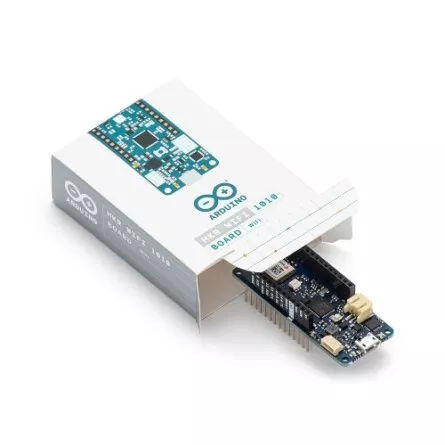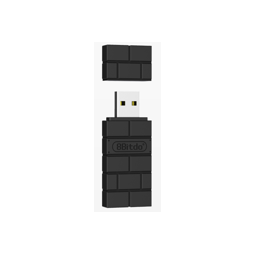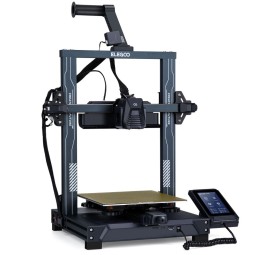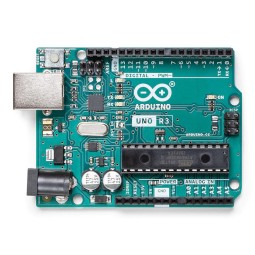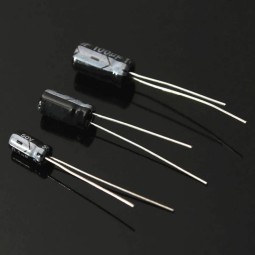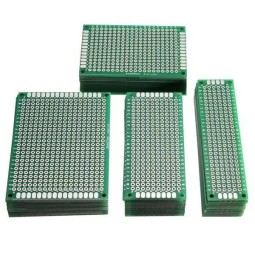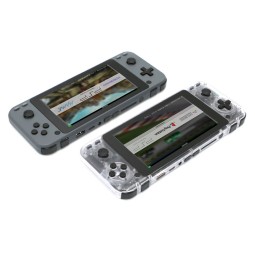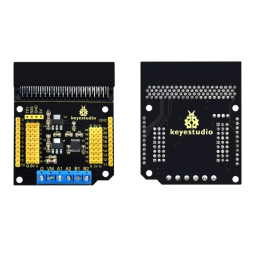- On sale!
ARDUINO MKR WIFI 1010
The Arduino card is the basis for creating secure WiFi and Bluetooth® applications.
ARDUINO MKR WIFI 1010
TheArduino MKR WiFi 1010 is the easiest way to design IoT and pico network applications. Whether you plan to create a network of sensors connected to your office or home router, or want to create a BLE device sending data to a cell phone, the MKR WiFi 1010 is the solution for many basic IoT applications.
The board's main processor is a 32-bit low-power SAMD21 Arm® Cortex®-M0. WiFi and Bluetooth® connectivity is achieved with a u-blox module, the NINA-W10, a low-power chipset operating in the 2.4 GHz range. In addition, secure communication is ensured by the Microchip® ECC508 cryptographic chip. On top of that, you'll find a battery charger and a steerable RGB LED on board.
WiFi and Arduino IoT Cloud
At Arduino, connecting to a WiFi network is as easy as flashing an LED. You can have your card connect to any existing WiFi network, or use it to create your own access point Arduino. You can see examples of how to use the MKR WiFi 1010 on the WiFiNINA library. It is also possible to connect your card to various Cloud services, including Arduino. Here are some examples on how to connect to the MKR WiFi 1010:
- Arduino 's IoT cloud: a quick and easy way to provide secure communication for all your connected devices.
- Blynk: a simple project to connect to Blynk to run your board from a phone with little code
- IFTTT: discover a detailed case of building a smart plug connected to IFTTT
- AWS IoT Core: An example on how to connect to Amazon Web Services
- Azure: check out this github repository explaining how to connect a temperature sensor to the Azure cloud
- Firebase: want to connect to Google's Firebase, this library Arduino will show you how
Bluetooth® and BLE
The MKR WiFi 1010 communication chipset can be both a BLE and Bluetooth® client and host. If you want to see how easy it is to create a central Bluetooth® device or peripheral, explore the examples in the ArduinoBLE library.
We let you hack
The MKR WiFi 1010 is a dual processor device that invites experimentation. Hacking the WiFiNINA module allows you, for example, to use both WiFi and BLE / Bluetooth® on the board. Another possibility is to have an ultra-light version of Linux running on the module, while the main microcontroller controls low-level devices such as motors or displays. These experimental techniques require advanced hacking on your side. They are possible by modifying the firmware of the module which you can find in our github repositories.
WARNING: this kind of hacking breaks the certification of your WiFiNINA module, do it at your own risk.
Battery power supply
Its USB port can be used to power the card (5V). It has a Li-Po charging circuit which allows theArduino MKR WiFi 1010 to work on battery or on an external 5V source, charging the Li-Po battery while working on external power supply. The switch from one source to the other is done automatically.
Getting Started
The Getting Started section contains all the information you need to set up your card, use the Arduino (IDE) software and start tinkering with coding and electronics.
Need help?
Check out the Arduino Forum for questions about the Arduino language, or how to create your own projects with Arduino. Need help with your board, please contact the official Arduino user support.
Warranty
Here you can find the warranty information for your card.
Summary
Data sheet
- Connectivity
- 8 digital I/O pins*~13 PWM pins: (0 .. 8, 10, 12, 18 / A3, 19 / A4)*~UART*~SPI*~I2C*~7-pin analog input (ADC 8/10/12 bit)*~Analog output pins (DAC 10 bit)*~8 external switches (0, 1, 4, 5, 6, 7, 8, 16 / A1, 17 / A2)
- Type of storage
- CPU flash memory: 256 KB*~SRAM: 32 KB
- Power supply
- 5V
- Dimensions
- 61.8 x 25mm
- Weight
- 32gr
Customers who bought this product also bought:
Questions (0)
No customer questions for the moment.


 Français
Français
 Español
Español
 Italiano
Italiano
 Deutsch
Deutsch
 Portugais
Portugais
